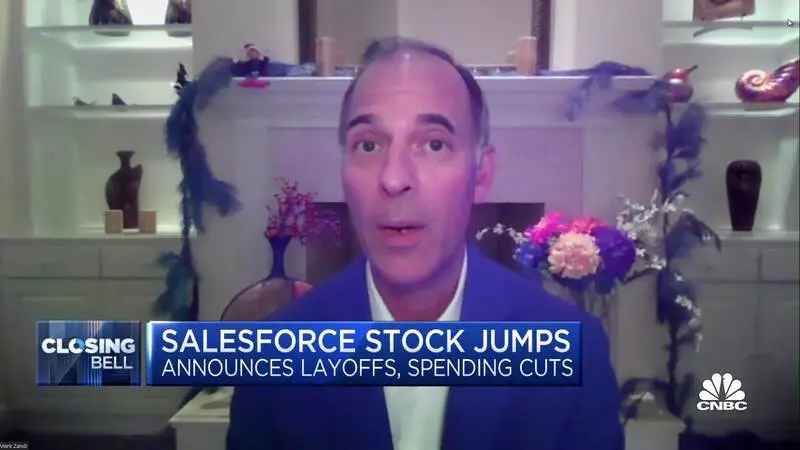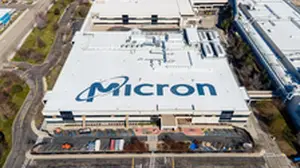
U.S. unemployment system still plagued by delays 3 years after pandemic-era downturn
These days the U.S. unemployment system is somewhat of an anomaly.
Almost three years after the Covid-19 pandemic caused the worst jobless crisis in the U.S. since the Great Depression, unemployment has recovered to near-historic lows. Applications for unemployment insurance have been at or below their pre-pandemic trend for the better part of a year.
Yet Americans who need jobless benefits aren't getting them quickly — a dynamic at odds with an apparent lack of stress on the system.
The federal government considers a first payment "timely" if states issue funds within 21 days of an initial claim for benefits. In March 2020, 97% of payments were timely; today, the share is 78%, on average, according to U.S. Department of Labor data.
The Labor Department views an 87% share as the barometer of success for first-payment timeliness.
The result is worse for workers who file an appeal over a benefit decision. For example, less than half — 48% — of hearings in a lower appeals circuit are resolved within 120 days. The pre-pandemic share was almost 100%, according to Labor Department data.
To be sure, delays aren't as bad as they used to be. At the pandemic-era nadir, just 52% got a "timely" first payment of unemployment insurance, for example. They also vary significantly between states, which administer benefits to laid-off workers, and the delays are getting shorter.
But the delays are still "significant," the Government Accountability Office said in a June report.
They can have real-world effects: deferred bills, postponed rent, accrued credit card debt, raided retirement savings, loans from family and friends for living costs, and a reliance on community food pantries to subsist before payments arrive, the GAO said.
Unemployment experts chalk up the discrepancy — i.e., longer delays despite fewer claims to process — to vestiges of the pandemic and state agencies that were already running on financial fumes heading into the crisis.
"Even though new claims are low, states are still digging out from the workload during the pandemic," said Nick Gwyn, an unemployment insurance consultant for the Center on Budget and Policy Priorities and a former staff director for the House Ways and Means subcommittee overseeing jobless benefits.
Pandemic pushes system 'out of whack'
It's "hard to exaggerate" the amount of work state unemployment agencies had to do in the months and years after February 2020, Gwyn said.
Unemployment claims spiked as businesses closed amid stay-at-home orders to contain the virus' spread. By early April, workers were filing about 6 million claims in a single week. Before this, the prior record was 695,000 claims in 1982. By the end of 2020, 40 million people had received benefits.
Meanwhile, the CARES Act created new programs to enhance the safety net: a $600-a-week bump in typical benefits, an extension of benefits to gig workers and others who are typically ineligible for aid, and an increase in the duration of assistance.
These programs were reupped and morphed many times between March 2020 and Labor Day 2021.
States were initially doing all this work — managing a deluge of claims, fielding worried calls from applicants, implementing and tweaking new programs, and issuing an unprecedented amount of funding — with bare-bones staffing and resources.
More from Personal Finance:
Amid big firm layoffs, tech jobs are still hot in 2023
What workers need to know about filing for unemployment benefits
Despite a wave of layoffs, it's still a good time to get a job
Administrative funding for state unemployment systems fell by 21% between fiscal years 2010 and 2019, according to the GAO. (The decline was an even larger [32%] after accounting for inflation.)
Federal funding for these programs ultimately hit lows dating to the 1970s in the run-up to the pandemic, said Andy Stettner, deputy director for policy at the Labor Department's Office of Unemployment Insurance Modernization.
Funding declined 21% in the most recent fiscal year, to $2.6 billion in 2022 from $3.3 billion in 2021, Stettner said.
The downward trend over this time reflects an underlying tension in the system's structure. States get funding based on their administrative workload, like the volume of claims states are paying.
At present — as in the years after the "great recession" — states are getting lower relative levels of federal funding due to more muted jobless claims. About 186,000 people filed an initial claim for benefits in the week ended Jan. 21, according to the Labor Department, fewer than the roughly 200,000 or so who filed a weekly claim at the outset of the pandemic.
That reduced funding is running headlong into a morass of leftover administrative work, some of which was sidelined as states rushed to implement CARES Act programs.
It's a topsy-turvy situation that's "out of whack" from the norm, Stettner said.
"The states were very threadbare going into the pandemic, which left them very unprepared," Stettner said. "One reason this backlog built up: [States] had to put off certain work when all the new claims were coming in, and they're just trying to catch up to it now."
Part of the current administrative burden is a kind of forensic accounting of funding issued during the pandemic, said Michele Evermore, a senior fellow and unemployment expert at The Century Foundation.
For example, states are assessing the extent to which they may have overpaid benefits, she said.
That's especially true for one CARES Act program, Pandemic Unemployment Assistance. Some state agencies didn't realize they had to reassess — on a weekly basis — a worker's qualifying reason for benefits, whether it be illness, caring for an ill individual, child care, or a disruption in gig work and self-employment. Now, they're asking PUA recipients to verify they are indeed qualified for all the benefits they received, Evermore said.

Criminals 'got hooked' on unemployment fraud
There have been other complicating factors, experts said.
States also have encountered historic levels of fraud. Organized crime rings and con artists hacked state systems to take advantage of the mayhem with hopes of getting access to relatively rich levels of federal aid.
"Fraudsters had a huge role in making things harder and slower," Evermore said.
Much of that was via identity theft whereby criminals stole personal data to claim benefits in others' name.
In fiscal year 2021, "improper" benefit payments were estimated to increase over nine-fold, to about $78.1 billion, from $8 billion the prior year, according to the GAO. The multiyear sum may exceed $163 billion or more, the Labor Department said.
Criminals are still attacking the system, experts said. They've adopted new tactics, too, such as "bank account hijacking," in which hackers identify claimants receiving unemployment insurance and funnel their weekly cash infusion into a new, fraudulent bank account, Evermore said.
"There are some criminals that kind of got hooked on this and they'll continue to try," Stettner said of the fraud.
States have clamped down by implementing various fraud controls like better identity verification. In some cases, those controls have delayed legitimate claims from being issued in a timely manner. A claim flagged for any reason generally must be vetted by a human at the state workforce agencies.
This all amounts to a delicate balancing act: Protecting funds from flowing to criminals or preventing claimants from getting too much money, while also trying to get assistance to people who need it quickly.
What happens to the UI system if we do have another recession? It's a very troubling question.Nick Gwynunemployment insurance consultant for the Center on Budget and Policy Priorities
Agencies have also had to shift personnel to handle backlogs in the appeals process, for example, reducing resources to ensure that first payments are delivered on time, Stettner said.
The Labor Department has been working with states to automate procedures, where possible, to boost efficiency, Stettner said.
"There are many states that continue to struggle to meet that acceptable level of performance," he added. "It's not a situation we want to see."
However, he said he believes "we're moving to the latter stages" of the delays.
A system unprepared for another recession
Gwyn agrees that things are moving in the right direction. But amid concerns of another economic downturn looming — accompanied by the threat of higher joblessness — the unemployment system isn't in a good position to respond if that does happen in the near term.
That outcome isn't a given, of course.
The Federal Reserve is raising borrowing costs for consumers and businesses in an attempt to pump the brakes on the U.S. economy to tame high inflation. The central bank sees a pathway to a so-called soft landing that averts recession.
"What happens to the UI system if we do have another recession?" Gwyn said. "It's a very troubling question.
"You put all that together and it's a system that's nowhere close to ready for another recession," he added.






